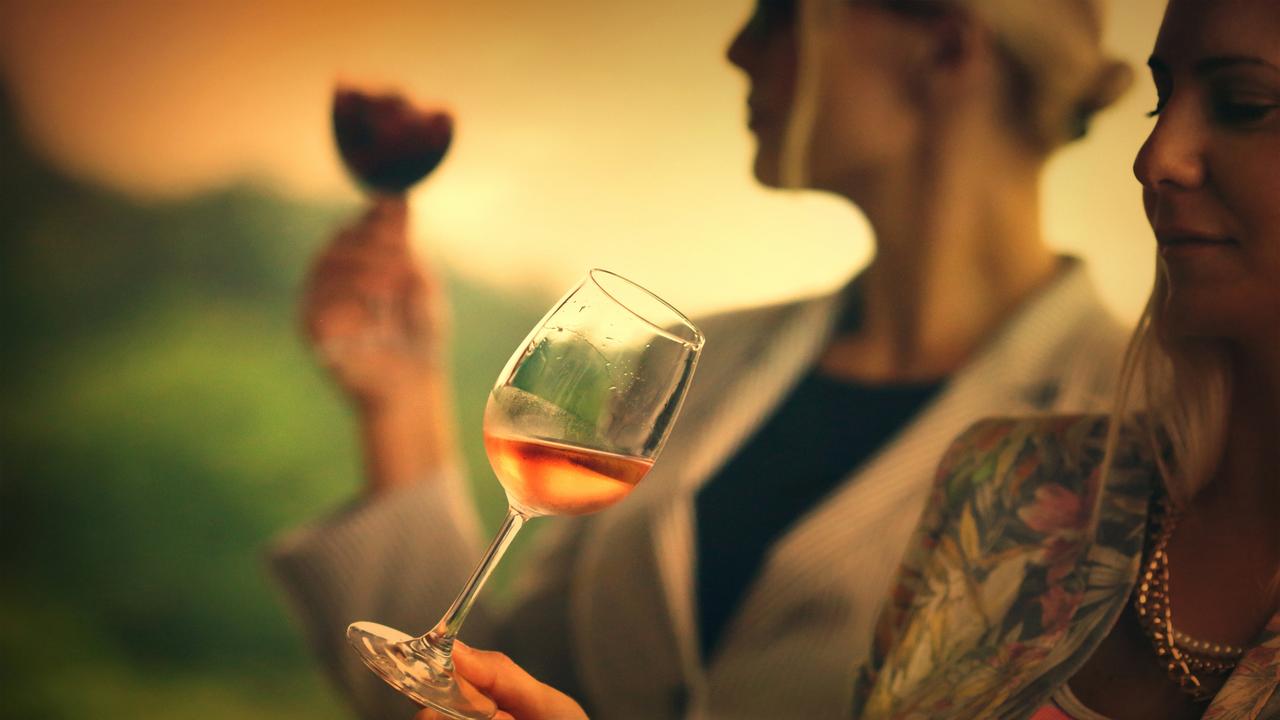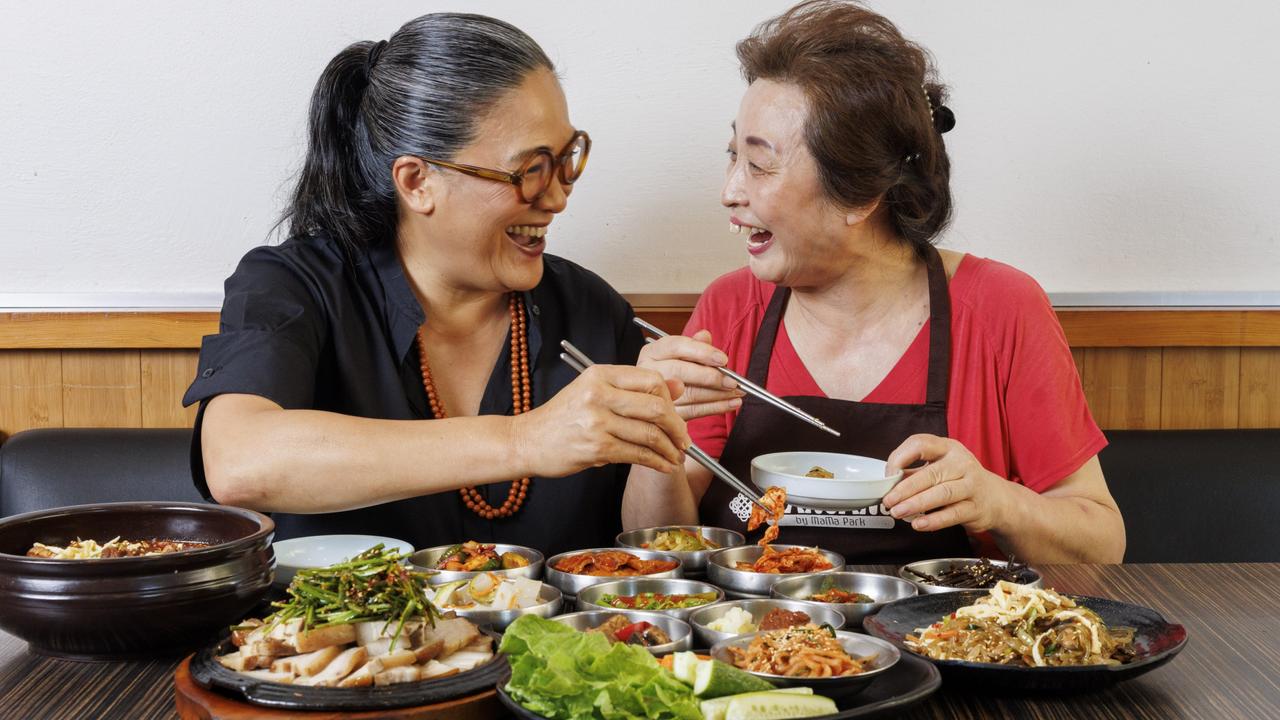Matt Preston’s World Of Flavour book debunks national dish myths
Some claim our favourite dessert originated in New Zealand but in his fantastic new book, Matt Preston dispels the myth — and some others — once and for all.
Food
Don't miss out on the headlines from Food. Followed categories will be added to My News.
Food writer and critic Matt Preston takes a look at the history of three Australian dishes — pavlova, oysters with finger lime, and steak diane — revealing why they are intrinsically national dishes.
He features them, and many others, in his new book World Of Flavour.
PAVLOVA
Myth: Pavlova is from New Zealand
My Truth: It has become a source of some national shame that Australia’s signature dessert might actually be the creation of our trans-Tasman rivals. Well, I am here to tell you not to worry. We’ve got this, Australia!
Russian prima ballerina Anna Pavlova toured Australia and New Zealand in 1926, and Australia again in 1929. Both tours were the biggest cultural events in those years. Many New Zealanders will tell you that pavlova was created in 1926 by an unnamed Wellington chef who decorated the dessert with kiwifruit in order to replicate the green roses on Anna Pavlova’s tutu. This is based on an unattributed story in a biography of Anna Pavlova written in the 1980s. Emeritus Professor Helen Leach of the University of Otago dismisses this version of events in her book The Pavlova Story: A Slice Of New Zealand’s culinary history, as she could find no evidence to support the claim.

Leach’s research did, however, find three desserts from this period named after Anna Pavlova.
First, a 1926 layered jelly that features neither cream nor meringue, in a NZ recipe pamphlet from the Davis Gelatine Corporation. Then there’s the Dunedin version of pavlovas, which were small coffee and walnut meringue kisses, which also sounds nothing like our pav. The closest thing is a 1929 Kiwi recipe for ‘pavlova cake’, where the meringue is split and filled with cream and preserved fruit, like a meringue version of a Victoria sponge.
It was a recipe for one of these meringue cakes published in the Australian Woman’s Mirror magazine in 1935 that Western Australian chef Bert Sachse was seeking to improve upon when he created his cream and fruit topped dessert and called it simply ‘pavlova’.
Sachse was head chef at Perth’s Esplanade Hotel, where Anna Pavlova had stayed in 1929, and it was his version of the pavlova that went on to become a worldwide hit. Kiwi claims of pavlova ownership hinge upon the fact that the meringue cake in the magazine was credited to an NZ reader, which fails to acknowledge that Bert’s creation was a distinct improvement on and development of the recipe.
It’s also something of a moot point, because we can show Australia had meringue cakes before they appeared in New Zealand.
The recipe most commonly cited as NZ’s earliest filled meringue cake was in the 1926 edition of Emily Futter’s Home Cookery For New Zealand. However, in 1922, a very similar recipe for meringue with cream filling had appeared in Australian Home Cookery. That’s unsurprising, because Miss Emily Futter was the author of that tome as well! So surely this means the dessert Sachse was inspired by was originally Australian?

I’d also suggest that what makes a pavlova a true pav is that the meringue is topped with cream and fruit rather than filled with it. That’s what made Sachse’s pavlova special, and what we love about pavlova today.
Here, too, Australia has the first claim, in the 1928 recipe for a ‘meringue cream gateau’ in NSW’s Molong Express, which is a pavlova by another name. The meringue is even made with vinegar, like some modern pavs, and topped with whipped cream and preserved fruit.
So now we have an overwhelming weight of evidence that the first meringue dish simply called ‘pavlova’ came from Australia; that the first recipe that reads like a modern cream and fruit pavlova came from Australia; and that recipe on which New Zealand’s pavlova claims are based seems to have originated in Australia too.
To close the case, I refer to the excellent research of New Zealander Dr Andrew Paul Wood and Australian Annabelle Utrecht, who have made it their quest to shed light on pavlova’s origins. Utrecht dismisses the idea that New Zealanders were the first to name a dessert after Anna Pavlova, pointing to a US ice cream bombe called ‘strawberries Pavlova’
that appears at the turn of the century.
Wood and Utrecht also argue that the meringue cake on which the NZ claim is based is actually a simplified descendant of the layered meringue cakes of the Austrian Habsburg Empire, such as the late-eighteenth-century Spanische Windtorte, or ‘Spanish souffle cake’.
This is a nest of crisp meringue filled with fruit, cream and currants or grated chocolate, which is then topped or closed with a sheet of meringue. There’s no pillowy marshmallow centre, however, and no use of vinegar or cornflour.
In the 19th century, descendants of that Austrian layered souffle cake – like Germany’s schaum torte (aka foam cake) and baiser torte (aka kiss cake) – spread around the world with migration.
OYSTERS WITH FINGER LIME
Myth: Like brambles and rabbits, oysters are a noxious species that were introduced to Australia after colonisation
My Truth: While some species of oyster, such as the Pacific oyster, were introduced – as recently as 1947 – First Nations people have been eating native oysters like Sydney rock oysters and Angasi or mud oysters since human habitation began on this continent tens of thousands of years ago.
We know this from the analysis of shell middens around Australia. These ancient rubbish dumps provide a fascinating insight into the traditional diet of coastal First Nations peoples, with oyster shells found at these sites being dated back to some 9000 years ago. (It’s also likely that even older middens containing older shells have been washed away by rising sea levels.)

A 3000-year-old midden used by the Dharawal people, south of Sydney Harbour, revealed that both Sydney rock oysters (badangi in Dharawal) and native mud oysters (dainya) were commonly consumed along with local cockles (gadyan) and hairy mussels (dalgal).
This story is repeated in Gadigal middens around Sydney Harbour and in Botany Bay and Broken Bay. Captain James Cook reported that the area around Sydney was thick with oyster reefs, some of which extended up to 10 hectares in size.
Oyster shells are also a common find in middens around the country. Near Hinchinbrook in North Queensland, oysters supplemented a diet that contained crabs and other shellfish, as well as the fish that are likely to have been caught in fish traps found around there.
Huge oyster beds were once common all around
the Australian coast, and a few can still be seen in out-
of-the-way coastal locations, like outside Coral Bay in Western Australia.
European colonists also ate the native oysters, but, more damagingly, they harvested the oysters in order to burn the shells to make lime for the cement used in their buildings. This practice decimated oyster reefs like the ones around Sydney, with the practice eventually banned – too late – in 1868. Dr Dominic Mcafee, a marine ecologist and researcher from the University of Adelaide, suggests that oyster reefs rivalling the size of the Great Barrier Reef were lost after colonisation in South Australia alone.
When people ask me for a truly Australian dish, this is what I now suggest, knowing that badangi and dainya have been consumed by First Nations people for as long as they have lived here. I have paired the oysters with a dusting of native pepper and a few carpels of acidic finger lime or blood lime, which will make any Sydney rock or Angasi oyster sing, and also speak proudly of the uniqueness of this land.
STEAK DIANE
Myth: Steak diane is one of Australia’s most successful and famous dishes overseas
My Truth: One great joy of writing this book has been discovering that the first record of steak diane comes not from some stuffy old French restaurant where the waiters still wear white gloves, but from Australia.
According to one of my favourite websites, Australian Food Timeline, steak diane appeared in Australia in the 1940s. The first mention of the dish’s popularity is found in the 29 February 1940 edition of the Sydney Morning Herald.
It was already a hit by this time thanks to maître d’ Tony Clerici, who had arrived back in Sydney at the end of 1939 to work at Romano’s restaurant. Clerici had previously migrated to Australia in 1923 to work with Romano’s owner and former head waiter at London’s Ritz Hotel, Azzalin Orlando Romano, but had returned to London in the 1930s to open his own restaurant in Mayfair, Tony’s Grill. He built a reputation there for his ‘woodcock flambe’ and other game dishes. You’ll even find a caricature of Clerici in society mag The Bystander in 1938, such was his celebrity. Tony’s Grill closed early in 1939, leaving Clerici free to return to Australia.


This was the era when tableside cooking (aka chafing dish cuisine) was the height of fashion in smart restaurants, and Clerici was a master of the craft.
The dish he is credited with inventing was simple: thin steak cooked quickly in butter and a little Worcestershire sauce, then tossed in the juices of the pan deglazed with garlic and parsley. It was a huge hit, helping making Romano’s the hottest restaurant of the war years, popular with US army officers and visiting American performers, who helped spread the fame of steak diane back home. It was the Americans who later added the theatre of flambéing the pan with brandy.
Now admittedly, Clerici’s tale is that he came up with the dish back home in London, but it was not to become world famous until it reached Australian shores.
The story goes that he freestyled it tableside at Tony’s Grill in an effort to cheer up the It girl of the day, actress and famous society beauty Lady Diana Cooper, on 1 October 1938. She was depressed about the annexation of Sudetenland the previous day and Hitler’s inexorable rise to power.
There are of course others who lay claim to inventing the dish, and while success always has many fathers, none of the other creation stories have quite so much detail, which I feel gives great weight to Clerici’s claim. His is also the version of the story that justifies the name ‘steak diane’, so while there may well have been other tableside steak dishes, I think we can safety assert Australian ownership of steak diane.





